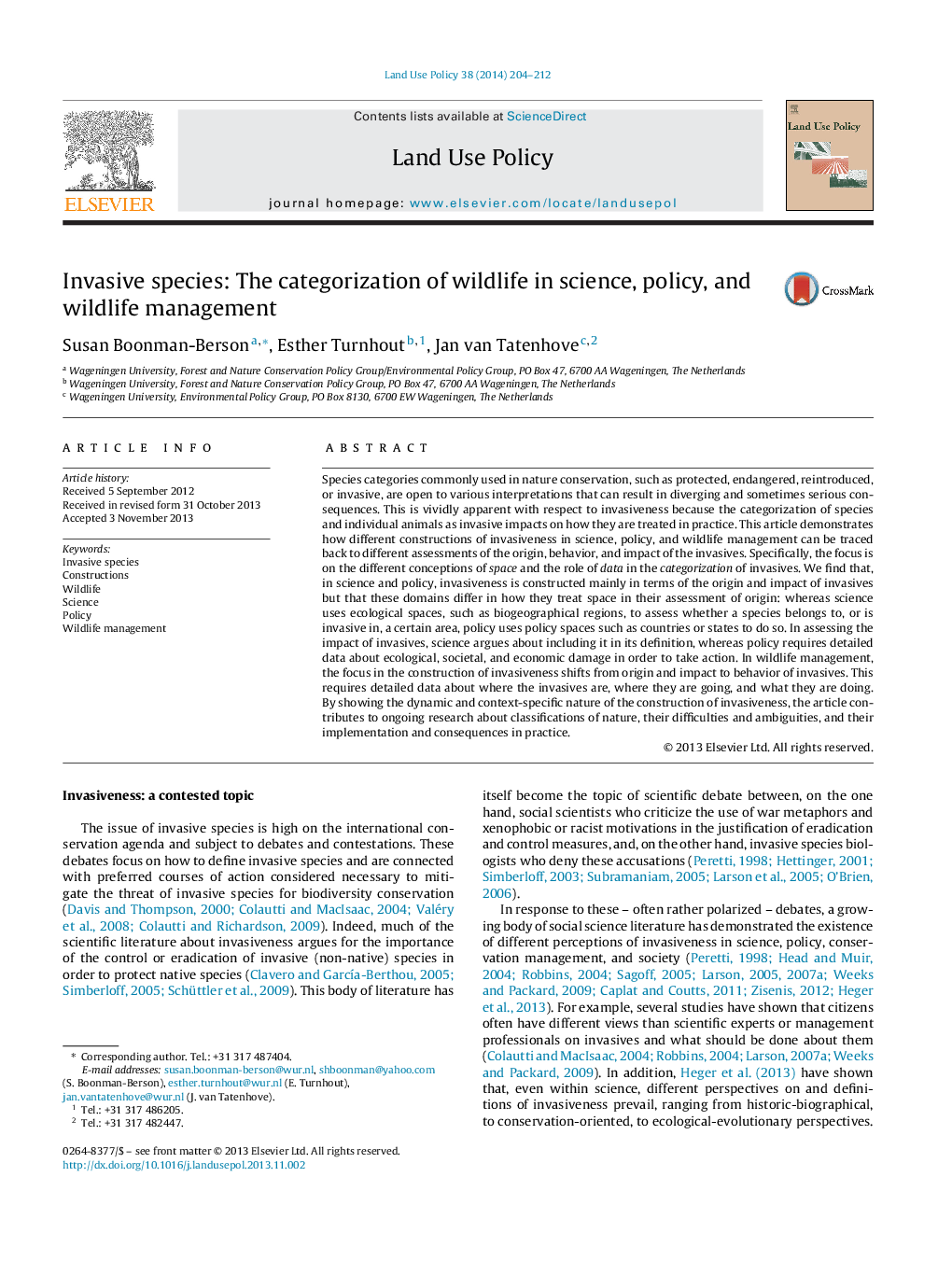| Article ID | Journal | Published Year | Pages | File Type |
|---|---|---|---|---|
| 6548750 | Land Use Policy | 2014 | 9 Pages |
Abstract
Species categories commonly used in nature conservation, such as protected, endangered, reintroduced, or invasive, are open to various interpretations that can result in diverging and sometimes serious consequences. This is vividly apparent with respect to invasiveness because the categorization of species and individual animals as invasive impacts on how they are treated in practice. This article demonstrates how different constructions of invasiveness in science, policy, and wildlife management can be traced back to different assessments of the origin, behavior, and impact of the invasives. Specifically, the focus is on the different conceptions of space and the role of data in the categorization of invasives. We find that, in science and policy, invasiveness is constructed mainly in terms of the origin and impact of invasives but that these domains differ in how they treat space in their assessment of origin: whereas science uses ecological spaces, such as biogeographical regions, to assess whether a species belongs to, or is invasive in, a certain area, policy uses policy spaces such as countries or states to do so. In assessing the impact of invasives, science argues about including it in its definition, whereas policy requires detailed data about ecological, societal, and economic damage in order to take action. In wildlife management, the focus in the construction of invasiveness shifts from origin and impact to behavior of invasives. This requires detailed data about where the invasives are, where they are going, and what they are doing. By showing the dynamic and context-specific nature of the construction of invasiveness, the article contributes to ongoing research about classifications of nature, their difficulties and ambiguities, and their implementation and consequences in practice.
Related Topics
Life Sciences
Agricultural and Biological Sciences
Forestry
Authors
Susan Boonman-Berson, Esther Turnhout, Jan van Tatenhove,
